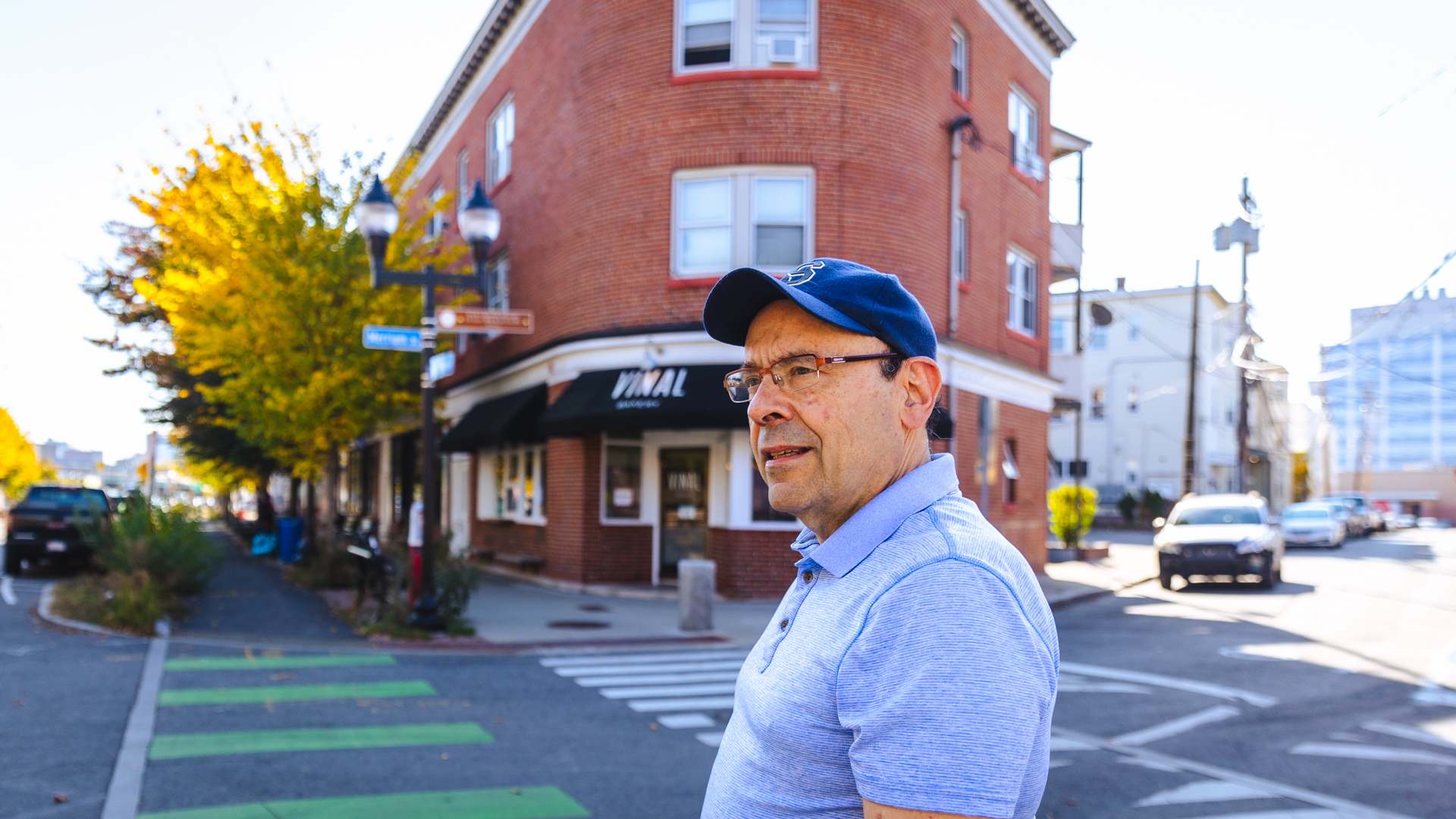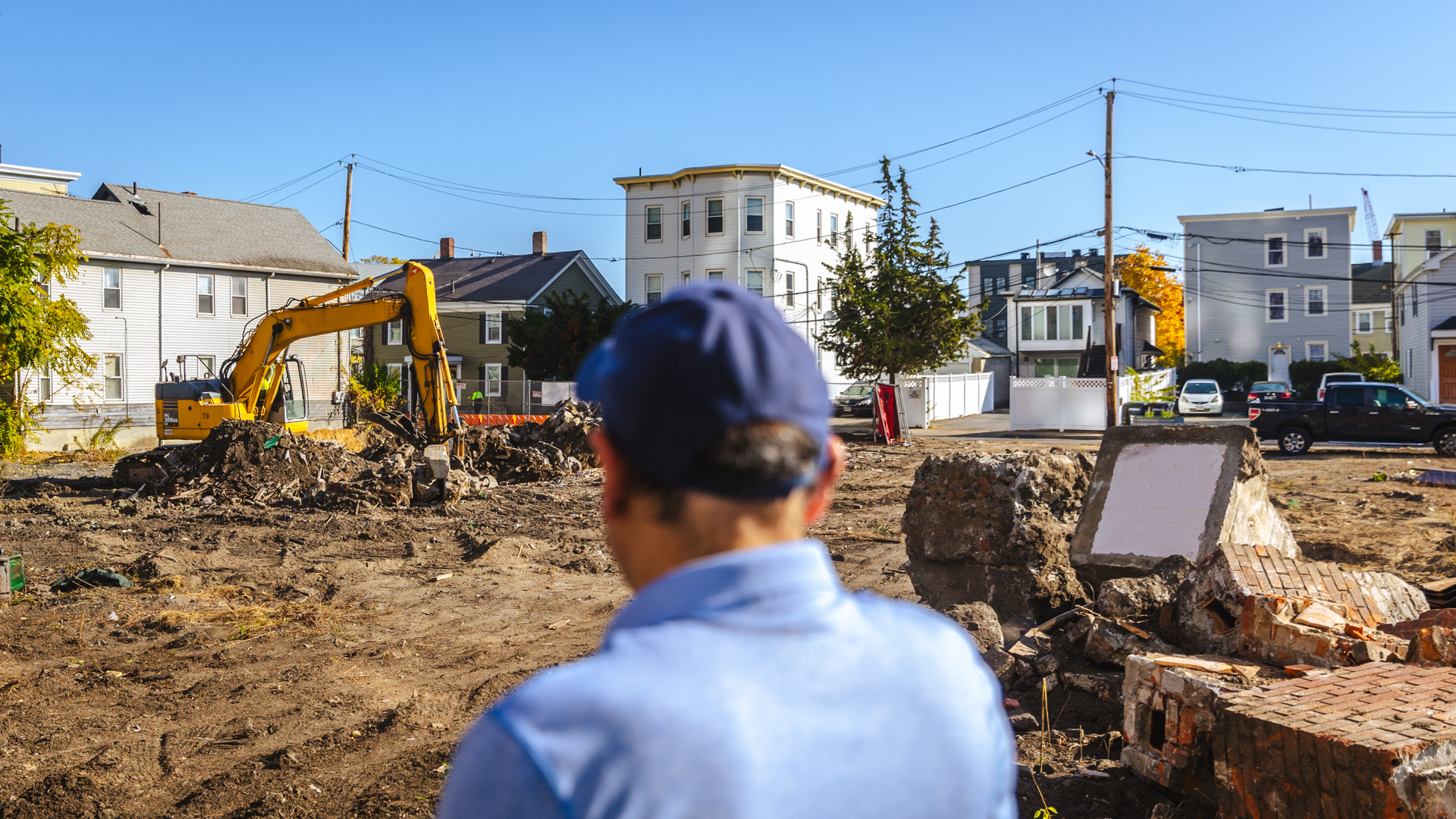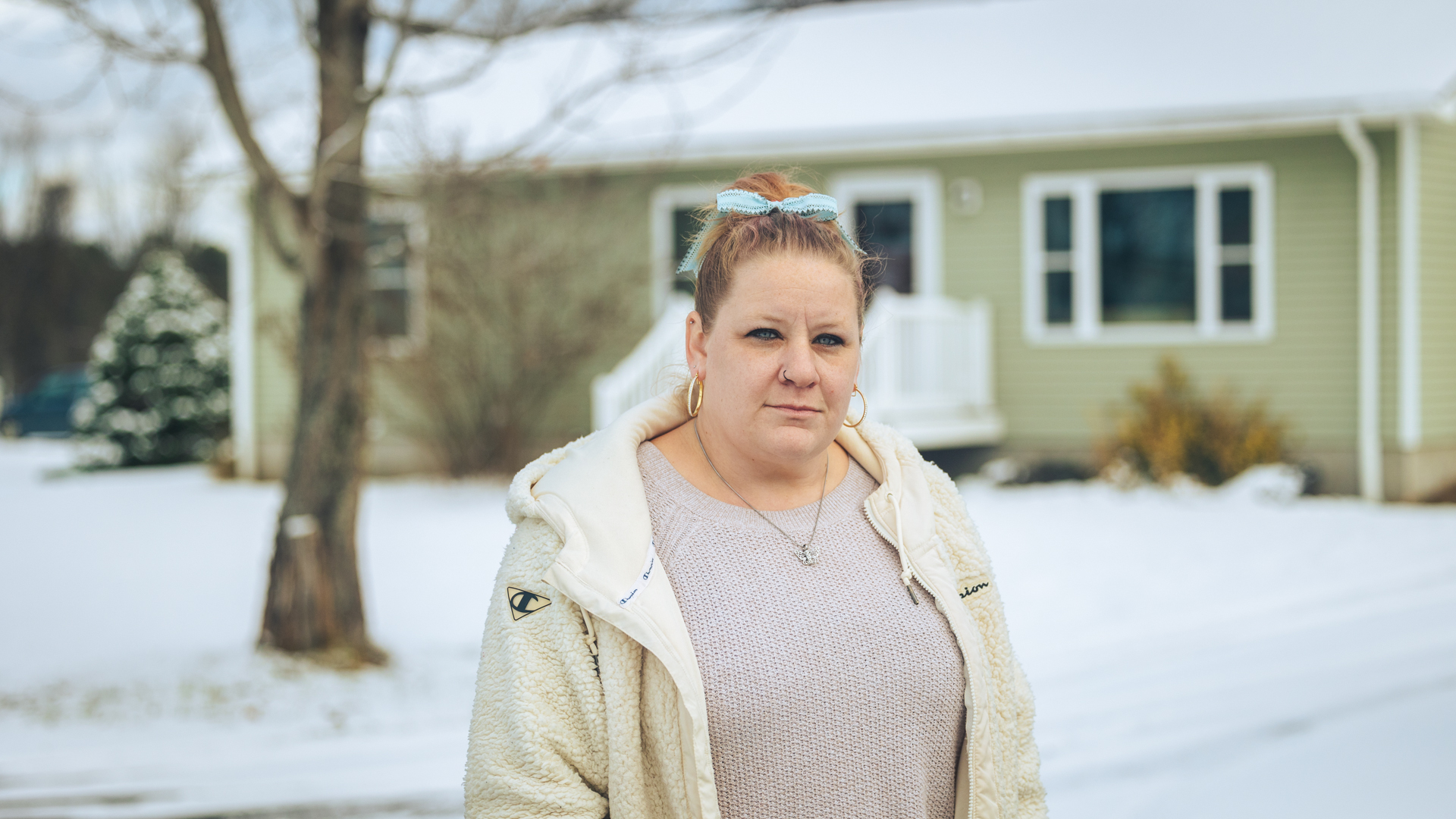‘Nowhere to hide:’ Housing costs keep climbing in all corners of New England 
Crisis of affordability, availability changes communities and lives as solutions remain elusive 
Danny McLaughlin’s history in Somerville began in 1948 when his grandmother arrived in the city, barely out of her teens, and bought a two-family house for about $12,000.
His mother grew up in that house near Davis Square, and so did he. McLaughlin moved out in his mid-20s, but he had no intention of leaving Somerville, ever – even after this city of 80,000 just north of Boston became a far different place from his youth.
Back then, it was a working-class outpost known by outsiders for its rows of triple-deckers, the notorious Winter Hill Gang crime outfit, and a rude nickname: “Slummerville.” Today, Somerville has a hip, urban vibe. Life sciences businesses have taken root. Condos fill once-vacant factory buildings. And its dense neighborhoods are magnets for professionals, academics, and artists.
Through these changes, Somerville never stopped being a place McLaughlin loves. It did, however, stop being a place he could afford.
The average home value in Somerville in October was $912,000, up nearly 40% since 2016. Rent for a two-bedroom apartment in November was $2,642, higher than the average mortgage payment in all but 13 states.
About two years ago, McLaughlin, his wife, and his now 2-year-old daughter moved out of his hometown.
“The dream was to live in Somerville,” McLaughlin said. “But it became a thing where I was like, ‘This isn’t going to happen.’”
3 images

Similar stories are told around New England, which is mired in a seemingly never-ending housing affordability crisis. The average value of a single-family home spiked in New England between October 2016 – 2024, more than doubling in two states, according to Zillow:
- Connecticut: up 69% ($254,983 to $430,844)
- Maine: up 102% ($196,985 to $398,663)
- Massachusetts: up 74% ($367,850 to $640,931)
- New Hampshire: up 102% ($248,008 to $500,528)
- Rhode Island: up 89% ($253,258 to $477,581)
In Vermont, values rose 67% ($236,232 to $393,579) during that period, and in 2023, the state had the highest percentage increase in home prices in the U.S. (12.8%). A new market assessment in Lamoille County, in north-central Vermont, says housing in this skiing and hiking haven is “short on supply and long on price.”
Seth Jensen, deputy director of the county’s planning commission, said housing access has gone from “critical to crisis” after recent flooding and post-pandemic price spikes for renters and buyers.
“We’re seeing it really impact seniors and working families,” he said.
Federal Reserve Bank of Boston senior economist Paul Willen said there were once corners of New England to flee high housing costs. But now?
“There’s nowhere to hide,” Willen said.
When McLaughlin, 42, began looking to buy in Somerville, surrounding communities weren’t any cheaper. But he got lucky when a relatively reasonably priced condo became available in neighboring Arlington. McLaughlin knew he had to act or potentially be forced to move further away from Somerville.
He has no doubt it was the right decision. He just wishes he didn’t have to make it. McLaughlin has spent his working life at nonprofits that serve Somerville teens and the poor. Didn’t that commitment to his city mean anything?
“I had a few people joke to me … when we moved out, they’re like, ‘Oh, you guys betrayed us.’ And I was like, ‘Somerville betrayed me,’” McLaughlin said. “The amount of love and involvement we have, and it’s just, like, it’s not a priority.”
The question is, what can be done in Somerville – and around New England – to make housing more affordable so community cores are preserved, local employers have enough workers, and people can stay in their hometowns?
Can anything?
Soaring pandemic-era housing costs pulled up prices everywhere
Housing costs have long been rising faster than incomes in the Boston area. But Willen said the story changed after the pandemic began, when remote work freed people to start buying homes away from job centers. Prices then soared around New England, not just in Greater Boston.
Since March 2020, home values in every New England state are up by more than the national average (43.7%). New Hampshire has seen the steepest increase at 64.2% (to $478,955).
It’s a similar story with rents, according to apartmentlist.com. In November, rents rose year-over-year in places like Hartford, Worcester, and Providence. Boston has the eighth-highest median rent in the nation at $2,344.
In October, Boston Fed President Susan M. Collins told business leaders in Vermont that housing challenges are “the main thing I hear about” traveling around the region. Hospital officials say they can’t find workers. Residents lament the exodus of young adults. Executives say new hires can’t find housing.
“The data show there are more challenges in New England,” Collins said.
Efforts to make housing more affordable often focus on increasing supply. For instance, zoning changes can allow denser construction and more multifamily units, or they can reduce minimum lot sizes, so parcels fit more single-family homes. The Boston Fed recently hosted an event that explored whether “accessory dwelling units” (like a basement apartment or backyard cottage) could help address the housing crisis.
But Willen says such measures won’t make much of a difference.
One major limitation is a lack of buildable land, Willen said. He recalled a year when he reviewed regional land transactions, and the biggest parcel that changed hands in New England was 300 acres. That year, a South Carolina town had three transactions totaling 25,000 acres.
“We just don’t have places where you can crank out two new homes a day for a year,” he said.
Jensen, from the Lamoille County Planning Commission, said antiquated infrastructure in some rural communities, like their water and sewer systems, may not be capable of supporting new growth.
Zoning changes also often meet heavy local resistance. In Massachusetts, for instance, the MBTA Communities Act requires local zoning changes near subway and commuter rail stations to allow more multifamily housing. But the law faces opposition from communities who say the state is overstepping its authority. One town refused to comply, the state attorney general sued, and now the case is pending before the state’s highest court.
As the crisis continues, the Fed collects data on trends like home sales, home prices, and homeownership rates to inform discussion. It also analyzes policy impacts. Willen’s research on whether property tax abatements could spark rental housing construction is one example. And Fed economists offer insights on housing market conditions.
But Fed leaders emphasize that the crisis will be addressed by fiscal policy, enacted by elected officials. Fed Chairman Jerome Powell recently said that the housing crisis is at root a housing shortage, and that “is not something that the Fed can really fix.”
According to Willen, the major obstacle to lowering housing costs in New England may be the high demand to live there, and that demand won’t inevitably cool down. Willen grew up in Manhattan, and he remembers when people in the 1980s said New York’s spiraling housing costs couldn’t possibly continue rising. But they did.
“You didn’t think they could go any higher, and they went up further,” he said. “So, that’s what worries me. I don’t see an obvious way out.”
Impacts from rising prices in one resort town ripple across a county
Leighton Detora was a self-described “ski bum” when he arrived in Lamoille County in 1969, straight out of law school. The Massachusetts native, then 25, ended up in Stowe one spring to help clean out the apartment of a law school classmate.
“I stayed that week, then the next week, and never left,” said the retired attorney, now 80.
Back then, Stowe had some wealthy families, as well as a stable population of blue-collar community members. It’s also home to Mt. Mansfield, Vermont’s highest peak, so skiing was the town’s economic engine. The summertime, Detora said, “was dead.”
On summer Sundays, he’d ride dirt bikes on old logging roads, stop by a bar on the mountain road, and sit out front with a beer while maybe one car went by every five minutes. That was before Stowe became the epicenter of a popular, year-round, and expensive resort area.
“Now, during summer and foliage season, it’s absolute gridlock,” he said.
A 2024 housing assessment found that Lamoille County’s population grew at twice the statewide rate between 2010 – 2022, and housing prices have risen with the demand for it.
The average home value in Stowe in October was near $982,000, more than double what it was eight years ago. In neighboring Morristown, values rose 90% over that time (to about $489,000). Meanwhile, the median rent in Lamoille County is about $1,700 a month, and vacancies are low.
The costs strain middle-income families in a county where the median household income is about $66,000. And though Stowe and Morristown contain 66% of the county’s subsidized and affordable housing, people still struggle to find homes, and employers struggle to find workers, the report said.
Another challenge for year-round residents is the area’s high percentage of seasonal homes and short-term rentals. They make up about 25% of the county’s overall housing stock and 58% of Stowe’s, according to the assessment. That makes it even harder to find a place to live.
Still, local tourism is strong, and Detora notes high-end developments seem to be thriving. But there are big and little signs that soaring housing costs and housing scarcity are having an impact. Detora has found, for instance, that some local restaurants are now only open four nights a week because they can’t find enough staff.
When he first moved to Stowe, Detora said blue-collar residents often lived comfortably, raised families, and owned property working as carpenters or masons in the summer, and ski patrollers or instructors in the winter.
“That’s impossible now, really,” he said.
A city’s evolution: “For some people it’s been very good. For some … it hasn’t.”
Detora’s community is far different from Bill White’s, but they’ve both watched their homes evolve into something new. When White was little, he lived in an apartment two blocks from Somerville’s last operating slaughterhouse, a remnant of a once-booming meatpacking sector. About a mile north, the Somerville Assembly Ford Motor Company Factory churned out cars.
2 images

But the auto factory closed in 1958, and the city had some struggles ahead. When he got to Harvard in neighboring Cambridge years later, he remembers feeling looked down on for his address.
“I was really one of the unwashed masses,” said White, a lawyer and longtime city councilor. “You sort of stuck out like a sore thumb … because you were from Somerville.”
Now, things have changed again. White is still in Somerville – he lives at the redeveloped site of the former Ford factory – and his city has never been so desirable or expensive. He imagines traveling to the past, trying to convince the parents of childhood friends that three-families in their city could go for $1.6 million in a few decades.
White himself is not sure what to think about it all.
“For some people, it’s been very good,” he said. “For some people, it hasn’t been.”
White and others say a major catalyst was the end of rent control in Cambridge in 1995. Rents shot up, and Somerville (where 66% of residents rent) was appealingly affordable.
Students from Harvard, MIT, and Tufts began to fill apartments. By 2000, they made up 20% of the population, compared to 5% in 1970, according to the city’s latest housing needs assessment. The city also worked to attract artists by, for example, changing zoning laws to provide incentives to convert underused space for art-related uses.
Somerville’s recently expanded public transit is another draw. But the transit upgrades – including the extension of the system’s Green Line in 2022 – illustrate the sometimes two-sided nature of the city’s progress.
White remembers the Green Line extension being pitched as a benefit to the city’s significant immigrant populations and the working class. The reality is different, he said.
“It bit us in the ass, in plain English ... because of the (high) rents and things,” he said.
2 images

Today’s Somerville has a unique dynamic. There are people who can afford the new Somerville and those who need subsidies to live there. There are also lifers whose properties are worth so much now that their kids and grandkids can’t afford to buy them.
That older guard is “slowly disappearing,” said Thomas Galligani, the city’s director of economic development. But he says the city is committed to preventing people from being forced out by high housing costs. Among its tactics:
- In all new developments of four or more units, 20% of the units need to be deed-restricted affordable housing.
- New commercial development projects include an “impact fee” that’s put into a trust to subsidize affordable housing.
- Large commercial developments pay “jobs linkage fees,” which fund training for Somerville residents to take the newly created and potentially higher-paying jobs.
Galligani said he knows they could lose this fight. But that would mean a future where the only people in Somerville are the wealthy and those lucky enough to get subsidized housing.
If that happens, Galligani said, “we’re going to miss that broad range of affordability, of working-class people and middle-class people.”
“We run the risk of losing our soul, is what it really comes down to,” he said.
A lifelong home, an uncertain future
Brook Salls is figuring out her next move. The lifelong resident of Morrisville, Vermont – a village of close to 2,100 about 15 minutes from Stowe – needs to find a new home.
2 images

In 2022, she was accepted into a two-year transitional housing program run by the United Way of Lamoille County for single-parent families at risk of homelessness. Salls, 37, and her teenage son will have to move out by next spring. But local rentals are out of reach.
She saw one listing for a three-bedroom apartment in Stowe for $4,000 a month. There was also a studio apartment near Morrisville for $1,600. Even condos for low-income families are still around $2,000 a month. It’s too expensive for Salls, who’s spent most of her career working at nonprofits.
“I was raised by a single mom, and she bought our first house here when I was about 7 years old,” Salls said. “That kind of opportunity is just nonexistent now.”
Salls has more experience searching for homes than most: She’s worked for years helping people in homeless shelters find housing. And she’s noticed demand for assistance is climbing.
The Lamoille Housing Partnership runs about 360 affordable housing units across the county. Its interim executive director, Lucy Leriche, said its waitlists are about three times longer than they were two decades ago.
Leriche attributes that to the county’s population growth and more people with addiction or acute health issues. But she’s also hearing from families whose wages aren’t keeping up with their rent increases. And she’s noticed middle- and high-income earners are renting for longer as they struggle to find homes.
“The affordability crisis … (has) really crept into the reality of people who are making more money now,” she said.
Stowe recently launched a taskforce to analyze the town’s existing housing stock and devise strategies that can help low- and moderate-income workers and residents find housing.
Taskforce chair McKee Macdonald said home-building in Stowe hasn’t kept up with the demand that shot up during the pandemic. And as people get priced out, that increases pressure on surrounding communities, like Morristown.
“Towns evolve, people's needs evolve,” he said. “If there aren't solutions available or hard choices being made, it has the potential to just exacerbate the problem.”
Detora said many newcomers who moved to his street during the pandemic and swore they’d raise their families in Stowe are long gone, and their houses are now short-term vacation rentals. He used to have five neighbors, Detora said. Now, he has one.
2 images

“The people who rent where I live, they’re here for a week, and then they’re gone,” Detora said. “It’s really changed the whole fabric of the town.”
Salls said she’s considering setting up a mobile home in a trailer park, so she can stay in the Morrisville area until her son graduates high school. Her 20-year-old daughter has already moved two hours away to find a place she can afford.
“Most of my family is here in Morrisville,” Salls said. “I’ve never lived anywhere else, so leaving is scary. But if it comes to the point where I have no choice … I’ll have to go.”
Media Inquiries? 
Contact our media relations team. We connect journalists with Boston Fed economists, researchers, and leadership and a variety of other resources.

 About the Authors
About the Authors
Amanda Blanco is a member of the communications team at the Federal Reserve Bank of Boston.
Email: Amanda.Blanco@bos.frb.org
Jay Lindsay is a member of the communications team at the Federal Reserve Bank of Boston.
Email: jay.lindsay@bos.frb.org
Site Topics
Keywords
- housing ,
- housing supply ,
- Lamoille County Vermont ,
- Massachusetts ,
- New England region






